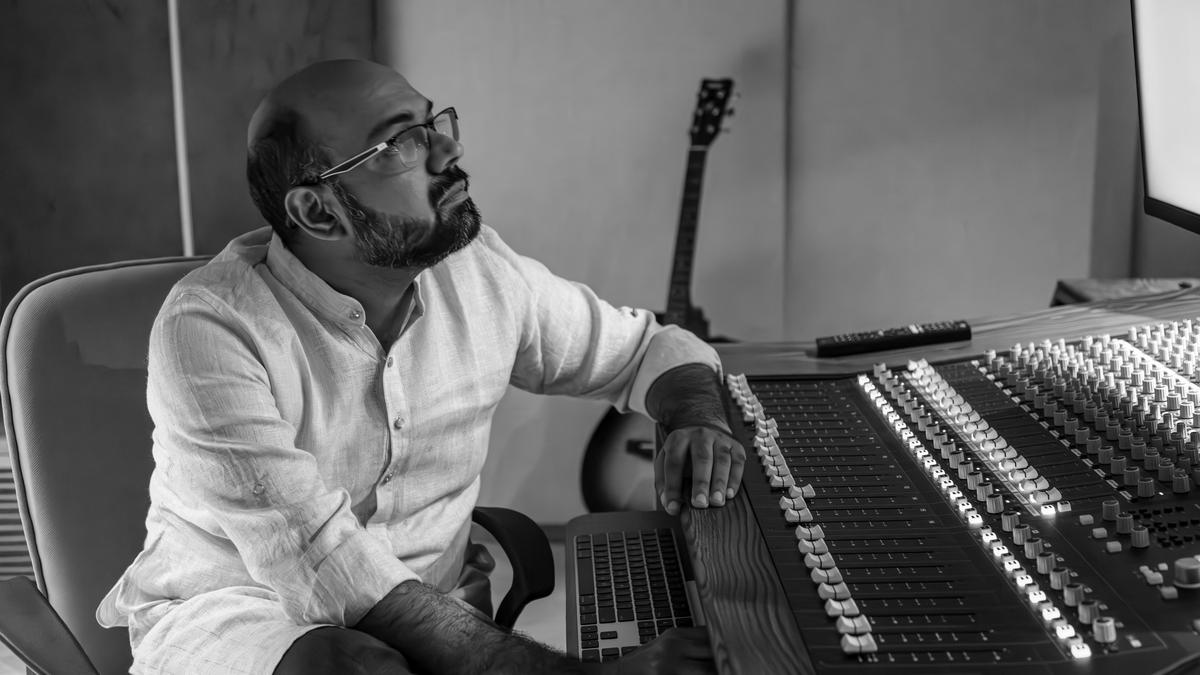
Violinist Sanjeev Venkataramanan’s award-winning film, Lost in Harmony, celebrates Nature through music
The Hindu
Violinist V. Sanjeev’s musical short film captures the emotions of being lost in nature, soaked in earthy tones.
Lost in Harmony is about losing oneself in Nature and all the feelings that it brings. Described as an “experimental, non-verbal, musical short,” the film is soaked in greens, browns and all shades between that only the earth can cook up. Many of those earthly tints have been captured in the film not only through the eyes of its protagonist (whose trek has unexpectedly turned into a solo adventure) but also through music that underscores the magic and mystery of the forest.
Produced by Sonic Sanctum Studios, the film’s concept, story and musical score are by Sanjeev Venkataramanan, a violinist, who identifies himself more as a composer and producer than as a Carnatic music performer. The film shot in forests across south India maps many contrasts — sound and silence, light and darkness, safety and risk, drenched leaves and dry rocks — to name a few.
The film depicts the myriad emotions that Nature can evoke. Fear, wonder, curiosity, peace, love and ecstasy are just some of them. A six-member team including two cinematographers, a wildlife advisor, producer, actor and director travelled about 3,000 kms over 15 days to get most of the footage.
After covering forests around Thekkady, Bhadra, Dandeli, Bandipur, Hogenakkal and other places, the team realised they needed more shots for which they travelled to the interiors of Puducherry, Senji and Pulicat. The shoot demanded trekking, camping and surrendering to the rhythm of the forest. It sometimes involved walking deep into the woods carrying equipment and supplies, or camping on sites surrounded by deep pits to keep away elephants. They spent some nights listening to stories from forest rangers or simply immersed in the symphony of sounds of the forest.
“Lost in Harmony is informed by all these experiences,” says Sanjeev, adding that he had to tweak the story during the shoot based on what the forests offered. Sanjeev’s musical journey always ran parallel to his relationship with Nature and love for wildlife photography. The inspiration for this film came from a single movement of music that he wrote. “Music can be used to convey a lot of emotions. Even without visuals, music lends itself to a story. The first image that came to me was of a young man seeking peace,” he says. Keeping that in mind, he wrote the music, which then became the foundation for the film, not the other way around where music is composed for visuals.
A senior Carnatic violinist and a long-time student of violin virtuoso A. Kanyakumari, Sanjeev found that one had always to “respond or answer someone” (mostly the main artiste) as an accompanying artiste in a classical concert. Being more interested in instrumental music and curious about the emphasis on harmony in Western music, Sanjeev sought to explore his own musical vocabulary.
“Western music has not explored gamakas and we have not explored harmony,” he says. Wanting to bring a confluence of both, he set about learning to write music using staff notation, for which he says, having a basic understanding of swaras helps. He veered towards orchestral music in his compositions, inspired by his musical icon Ilaiyaraaja, whose ability to make music in the most measured way, he admires. “There’s never an excess of music in Ilaiyaraaja sir’s compositions. Every note sits just right with the visuals,” says Sanjeev











